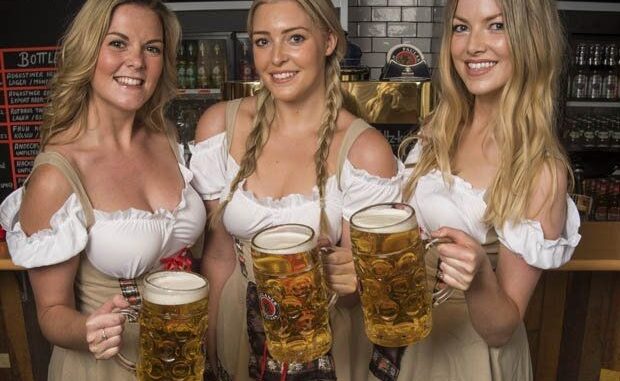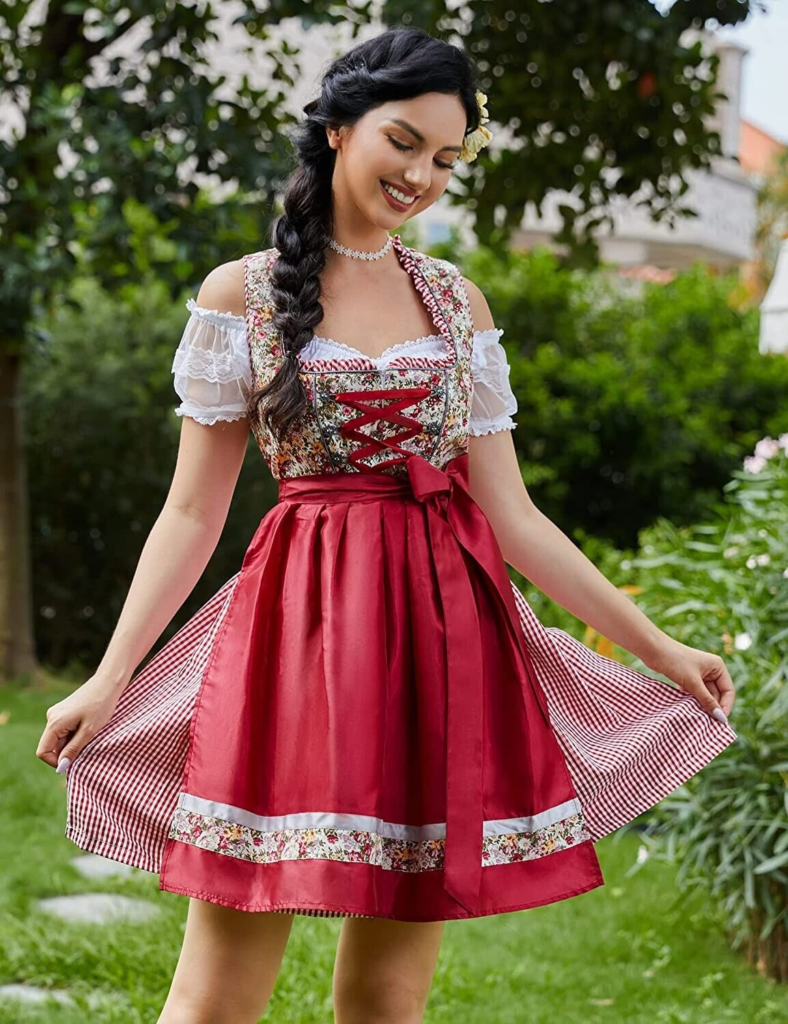
Oktoberfest in Munich is not only a celebration of beer, food, and culture, but also a showcase of traditional Bavarian fashion. One of the most striking features of the festival is the vibrant, colorful costumes worn by attendees, particularly the women. The Dirndl, a traditional Bavarian dress, has become synonymous with Oktoberfest, and its timeless elegance and charm make it a symbol of the festival’s rich heritage.
The Dirndl: A Timeless Tradition

The Dirndl is much more than just a piece of clothing—it’s a deep-rooted symbol of Bavarian tradition. The outfit consists of a tight-fitting bodice, a full skirt, an apron, and a blouse. Originally, the Dirndl was worn by rural women as everyday attire, but over the centuries, it has evolved into the festive, stylish garment seen at Oktoberfest today.
The design of the Dirndl varies slightly, but the elements remain consistent. The bodice is often decorated with intricate embroidery, while the skirt can be a bold, colorful pattern or a simple, elegant shade. The apron, typically tied at the waist, adds a finishing touch to the ensemble. The blouse, with its puffed sleeves and delicate lace or ruffled details, adds a feminine, graceful flair to the look.
Colors, Fabrics, and Personalization

The colors and fabrics of the Dirndl are part of its beauty and tradition. Bright, rich tones such as red, green, blue, and yellow are common, though modern Dirndls can also be found in more subtle or pastel shades. The choice of fabric also adds to the charm, with satin, velvet, and cotton being the most popular options. Each color and pattern can hold a different meaning, and often, women will choose their Dirndl to reflect personal taste or regional tradition.
What makes the Dirndl even more special is how it allows for personalization. Women can choose from a variety of accessories, such as decorative pins, scarves, hats, and jewelry, to further enhance their look. The apron’s bow is often tied in a way that can indicate a woman’s relationship status, adding a fun and traditional touch to the attire. A bow on the left side suggests that the wearer is single, while a bow on the right indicates that she is taken. A bow in the center signals that she is still looking for love, and on the back, it means the woman is a widow.
The Beauty of Tradition

At Oktoberfest, the Dirndl is more than just a beautiful dress—it’s a living piece of history. Wearing the Dirndl is a way for women to celebrate and honor Bavarian traditions and culture. The craftsmanship involved in creating these dresses, along with the pride women take in wearing them, helps preserve a centuries-old custom that continues to thrive today.
The beauty of the Dirndl lies not only in its elegant design but also in the sense of connection it provides to the past. When women put on a Dirndl, they are stepping into a role that has been filled by generations before them. It is a tribute to Bavarian roots, a nod to rural life, and a celebration of the rich heritage of Munich and the surrounding areas.
A Celebration of Elegance and Joy

The atmosphere of Oktoberfest is undeniably enhanced by the stunning array of Dirndls on display. The sight of women donning these dresses as they raise their beer mugs and sing along to traditional Bavarian music creates a sense of unity and festivity that is hard to match. The combination of beauty, tradition, and celebration that the Dirndl represents makes it an essential part of the Oktoberfest experience.
A Modern Twist on Tradition
While the Dirndl remains deeply traditional, it has also seen some modern adaptations over the years. Designers have brought contemporary elements into the traditional style, incorporating modern fabrics, trendy cuts, and fresh designs to make the Dirndl appealing to a new generation. However, the essence of the Dirndl remains unchanged—elegant, festive, and timeless.
For many women, wearing a Dirndl at Oktoberfest is a rite of passage, a way to join in the celebration of Bavarian culture, and an opportunity to embrace the beauty of tradition. The Dirndl continues to be one of the most iconic and beloved elements of Oktoberfest, capturing the charm and elegance of both the festival and the region it celebrates.
Leave a Reply